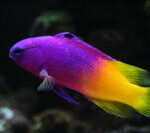Dragons in the Symbolic Artworks of Chinese Dynasties

The dragon, a revered and powerful symbol in Chinese culture, has captivated the imagination of generations across the centuries. In the vast landscape of Chinese art, the dragon stands as a symbol of power, prosperity, imperial authority, and even spiritual enlightenment. Its dynamic form and multifaceted symbolism have made it one of the most prominent and influential motifs in Chinese history. Over the centuries, the representation of the dragon has been intricately tied to various art forms, transcending dynasties, evolving with changing political, cultural, and spiritual landscapes.
From the Tang Dynasty to the Qing Dynasty, the dragon became not only a symbol of imperial rule but also a significant element in symbolic art. This article explores how the dragon appeared in the symbolic artworks across several Chinese dynasties, focusing on the meanings it conveyed, the artistic techniques used, and how these artworks reflect the changing dynamics of Chinese history and culture.
The Dragon as a Symbol of Imperial Power and Divine Protection
In Chinese culture, the dragon is a symbol of imperial power, closely associated with the emperor who was considered the Son of Heaven. It was believed that the emperor’s right to rule was granted by the heavens, and the dragon served as a divine protector of the empire. This powerful creature, often depicted with a long, serpentine body, clawed feet, antlered head, and flowing mane, was seen as capable of summoning rain and ensuring the prosperity of the land.
The dragon has long been intertwined with the symbolism of imperial rule, especially in the context of Chinese art. The yellow dragon, in particular, was associated with the emperor due to its connection with the color yellow, which symbolized the emperor’s exclusive authority. This connection between the emperor and the dragon made it a dominant feature in the symbolic artworks of various Chinese dynasties.
Dragons in Tang Dynasty Art (618–907 AD)
The Tang Dynasty (618–907 AD) was a period of remarkable cultural flourishing in China. During this era, Chinese art saw significant development, and the representation of the dragon became more vivid and detailed. The Tang dynasty dragon was often depicted in a more realistic and fierce manner compared to earlier representations. The dragon was frequently seen in ceramics, sculpture, and silk embroideries.
One of the most striking features of Tang dynasty dragon art was its symbolic connection to the emperor’s authority. Dragons were often portrayed in a vibrant and dynamic style, emphasizing their divine energy and power. Tang tomb murals often depicted the emperor alongside dragons, reinforcing the idea that the ruler was not only a human leader but also a divine being with heavenly protection.
In the Tang period, the dragon motif was also used in buddhist art, reflecting the growing importance of Buddhism in China. In these contexts, the dragon symbolized spiritual power and protection, linking the ruler’s power with divine forces in the cosmic order. These dragons, while still imperial in their connotation, also represented the harmony between the earthly and divine realms.
Dragons in Song Dynasty Art (960–1279 AD)
The Song Dynasty (960–1279 AD) is often remembered for its advancements in artistic refinement and scholarly culture. During this period, the dragon maintained its prominence as a symbol of imperial power but began to take on a more elegant and graceful form. Song dragons were less fearsome and more stylized, often represented in a more flowing, naturalistic manner.
In Song paintings, the dragon was depicted in a more subtle and delicate way, often integrated into landscapes or floral motifs, symbolizing the integration of imperial power with the natural world. In these artworks, the dragon was often serene and benevolent, reflecting the growing influence of Daoist and Buddhist philosophies, which emphasized harmony and balance in the universe.
The Song dynasty dragons were also frequently found in porcelain works, one of the most famous art forms of the period. The blue-and-white porcelain that became a hallmark of the Song era often featured intricate dragon motifs, symbolizing imperial supremacy and divine favor. These porcelain pieces, renowned for their elegance, were highly sought after, both within China and abroad, contributing to China’s reputation as a center of artistic excellence.
Dragons in Yuan Dynasty Art (1271–1368 AD)
The Yuan Dynasty (1271–1368 AD) was marked by the Mongol rule over China, following the unification of the empire by Kublai Khan. During this period, Mongol and Chinese cultures intertwined, leading to a new wave of artistic expression. The dragon’s symbolism as a powerful protector and symbol of the emperor’s authority remained, but its artistic representations became more abstract and dynamic.
In Yuan dynasty art, the dragon was frequently depicted in ceramic works, wall paintings, and texts. The depiction of dragons was often more expressive, with bold and dynamic lines that suggested movement and energy. The Yuan dragons were particularly noted for their dramatic depictions, with dragons appearing more intertwined with the universe, often symbolizing the emperor’s cosmic connection and divine rule.
The dragon dance, which became an important aspect of Yuan cultural life, began to take shape during this period. Dragons in Yuan artistic representations were not only symbols of imperial power but also linked to the concept of good fortune and prosperity, as they were believed to bring rain and abundant harvests.
Dragons in Ming Dynasty Art (1368–1644 AD)
The Ming Dynasty (1368–1644 AD) is considered one of China’s most culturally and artistically prosperous periods. During this time, the dragon was a dominant symbol of imperial power, appearing in nearly every form of artistic expression, from porcelain and silk to palace architecture and tomb paintings. The Ming dragon was particularly noted for its majesty, elegance, and power.
In Ming dynasty artworks, dragons were often depicted in a powerful and heroic style, with sharp, distinct features that emphasized their divine authority. The Ming emperors used the dragon symbol to assert their legitimacy and to maintain their rule. The dragon robes worn by the emperor during ceremonial occasions were richly embroidered with gold thread and featured dragons chasing pearls, which symbolized the emperor’s pursuit of wisdom, enlightenment, and prosperity for his people.
Ming dragon paintings were often highly detailed and dynamic, capturing the dragon’s movement and majesty. These works often depicted dragons in the context of cosmic forces, suggesting their power to control the elements and bring balance to the world. The dragon, in these representations, was a direct link between the emperor’s divine right to rule and the cosmic forces that governed the universe.
Dragons in Qing Dynasty Art (1644–1912 AD)
The Qing Dynasty (1644–1912 AD) was the last imperial dynasty in China, and the dragon continued to be a central symbol of imperial authority. The Qing dragon was often depicted as a five-clawed dragon, a symbol reserved exclusively for the emperor. This form of the dragon was the ultimate representation of the emperor’s absolute power and his connection to the heavens.
In Qing dynasty art, the dragon was prominently featured in imperial robes, ceremonial artifacts, and palace decorations. Qing porcelain frequently depicted dragons, particularly the dragon-and-pearl motif, symbolizing the emperor’s power and divine favor. These porcelain works were highly prized and became famous across the world for their intricate craftsmanship and symbolic meaning.
The Qing dragon also appeared in court paintings and wall murals, emphasizing the emperor’s divine right to rule and his role as the protector of the Chinese people. The dragon’s presence in these artworks was meant to convey the emperor’s connection to divine forces and to reinforce his authority over the empire.
Conclusion
From the Tang to the Qing Dynasties, the dragon has been a central symbol in Chinese art, representing imperial authority, cosmic power, and divine protection. Its symbolism evolved over time, reflecting the changing political, spiritual, and cultural landscapes of China. Through the centuries, the dragon remained a consistent symbol of strength, wisdom, and prosperity, and its presence in ceramics, painting, sculpture, and textiles continues to inspire awe and reverence.
The symbolic representation of the dragon in Chinese dynastic art is not just a reflection of imperial power; it is also a representation of the cosmic harmony between the emperor, the people, and the forces of nature. As an enduring symbol, the dragon continues to shape and influence Chinese culture, serving as a reminder of the balance of power, the divine right to rule, and the eternal relationship between humanity and the universe.

